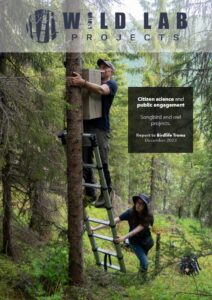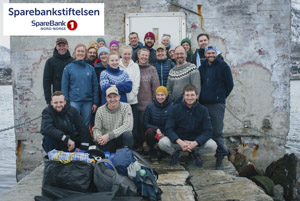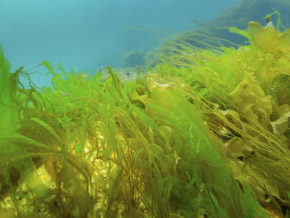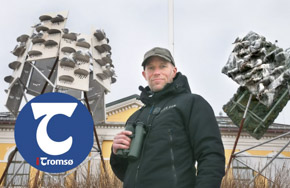January 08, 2024
A promising first year, engaging the public in nature conservation and regenerative traveling.
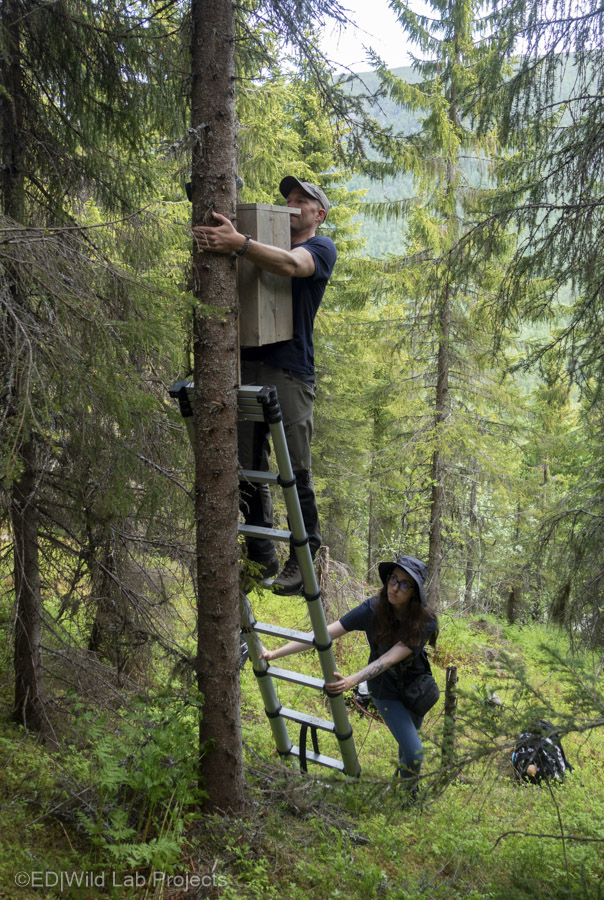
It is the time of year where we stop for a moment, and look back at what we have accomplished so far.
In this article, we focus on our two bird projects: the owl project, and the songbird project, which are described on our website and at the end of this page in our report to Birdlife Troms.
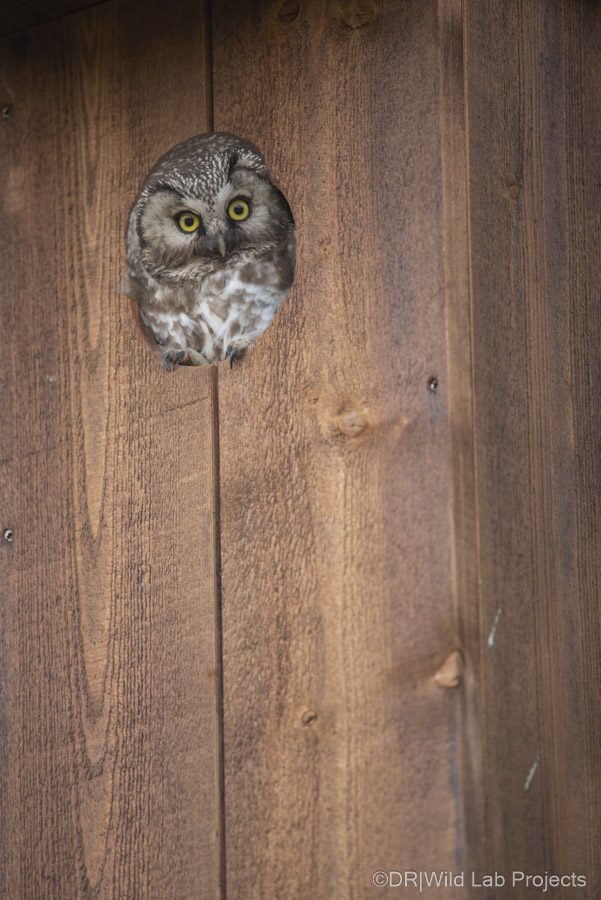
What’s the owl project about?
Since 1978, a team of local ornithologists have been deploying artificial nests in the Troms region, to help and learn about the Tengmalm, pigmy and hawk owls. Today, more than 500 nestboxes are up in trees and monitored. This exceptional time series has produced a considerable amount of knowledge on the demography, movements and conservation status of Scandinavian owls. It also challenged some widespread ideas concerning the owls’ ecology, behavior and breeding cycles.
There was one missing piece in the puzzle: most of the nestboxes were inland, away from the coast. The team suspected that the coastal owls followed different patterns. Wild Lab Projects fills this gap, thereby completing the puzzle. Our observations are merged into the general database, as a contribution to this remarkable collaborative effort.
Goals of this citizen science project:
– Provide nesting sites to Tengmalm, pigmy and hawk owls.
– Learn about the owls’ demography, migration, diet, phenology and conservation status.
– Raise awareness about logging and habitat destruction.
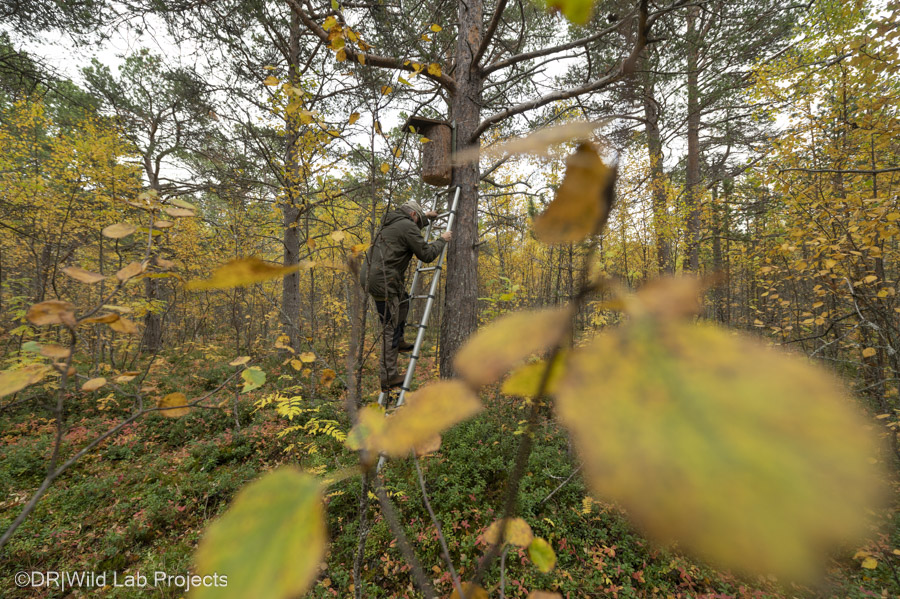
What is the songbird project?
Urbanization is one of the greatest human impacts on the natural environment. An obvious difference between urban and natural environments is the amount of artificial light at night (ALAN).
Because of the natural long days and nights in the Arctic throughout the year, the presence of ALAN in cities may affect animals and plants in different ways than what is observed in southern locations where most studies take place.
How do songbirds manage the time of their activities during the day and over the seasons? How does this influence their survival and reproductive success? These are the questions Dr Barbara Tomotani, biochronologist at the Arctic University of Norway (UiT) wants to answer. Wild Lab Projects collaborates with Dr. Tomotani, involving the public and integrating citizen science into her research.
“Light pollution – excessive artificial light at night – threatens migratory birds & other wildlife all around the world”
António Guterres, Secretary-General of the United Nations.
Goals of this citizen science project:
– Better understand how artificial light at night affects songbirds.
– Raise awareness about light pollution.
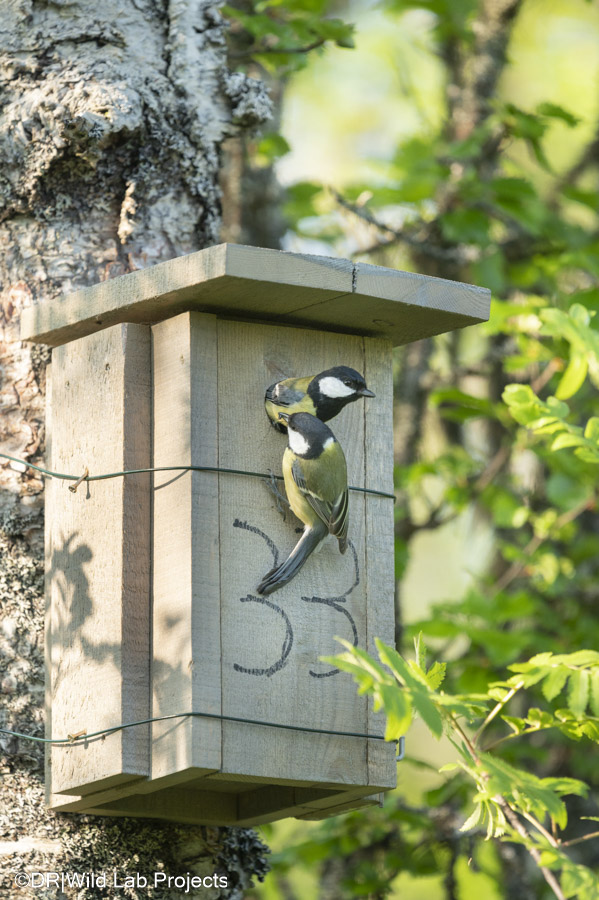
Building and painting nestboxes
Both projects require a great number of nestboxes.
We use wood from pallets that are meant to be discarded, and that we collect from various sources in Tromsø. The planks of these pallets are thick (20 mm) and durable.
Between February and December 2023, we built 8 nestboxes for owls and 107 songbird nestboxes. We will build 23 additional songbird nestboxes in January, and we will keep building more boxes in 2024.
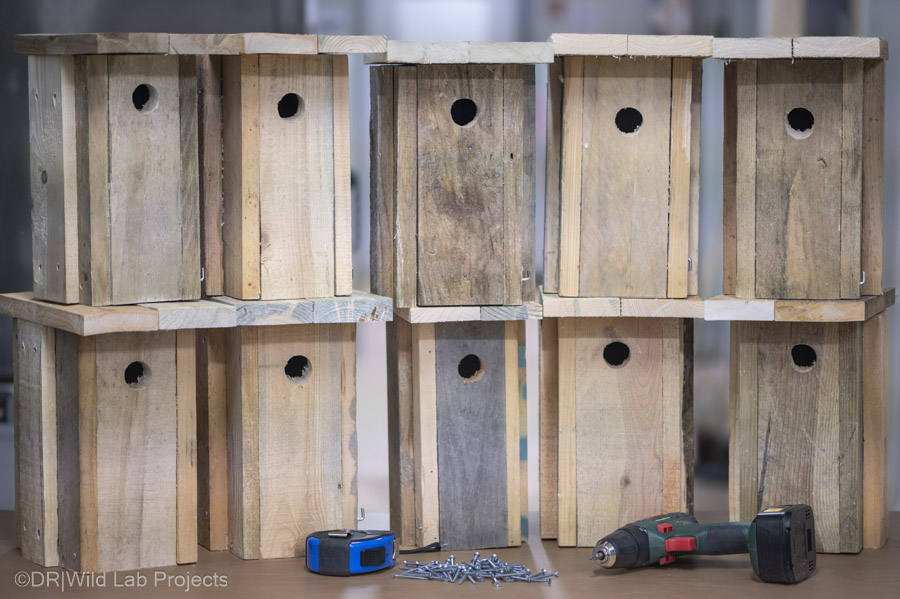
Local workshops
Volunteers joined building sessions spontaneously on a regular basis. In summer, we organized an event with locals to build nestboxes (in Høkopark, we’re grateful to them!) that were to be put up in their neighborhood. In autumn, we organized another event to put up nestboxes.
Putting up the nestboxes
Owls – Of the 8 owl nestboxes we built, we put up 7 boxes in the lower part of Tromsdalen where the birch forest is still relatively dense, and mixed with spruce plantations. We put the nestboxes up in trees with participants, volunteers and travelers, in February, June, August and September and recorded their position. We are now waiting for the next breeding season to see if they will be occupied.
Songbirds – Of the 107 songbird nestboxes we built, 79 have been put up on Tromsøya, in the forest that covers the top of the island. Most nestboxes we built were put up by our research partner and her team. The next 28 will be put up when the paint is dry (soon!). We will build at least 23 more in January and maintain the effort throughout 2024.
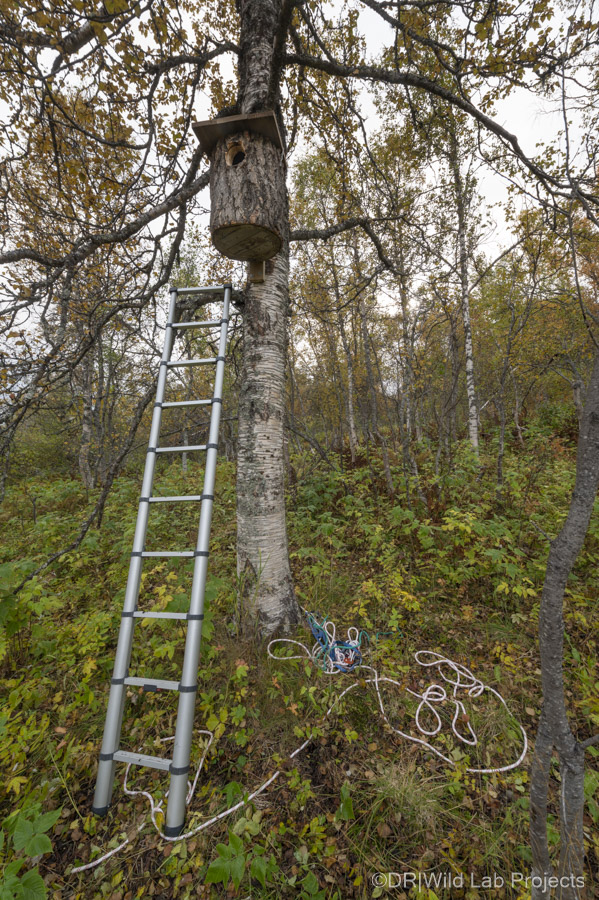
Checking the nestboxes
Owls – We considered every new visit as an opportunity to control the nestboxes already in trees, using non-intrusive methods to limit disturbing potential occupants. We organized 5 events with volunteers and visitors to put up new nestboxes, and control those previously deployed.
Songbirds – We organized 8 events to put up nestboxes in trees between February and December 2023. Nestboxes were also taken down when damaged, maintained on site if possible or replaced. These visits were done with volunteers and travelers. Frequent controls of nestboxes were done by our research partner and her team.
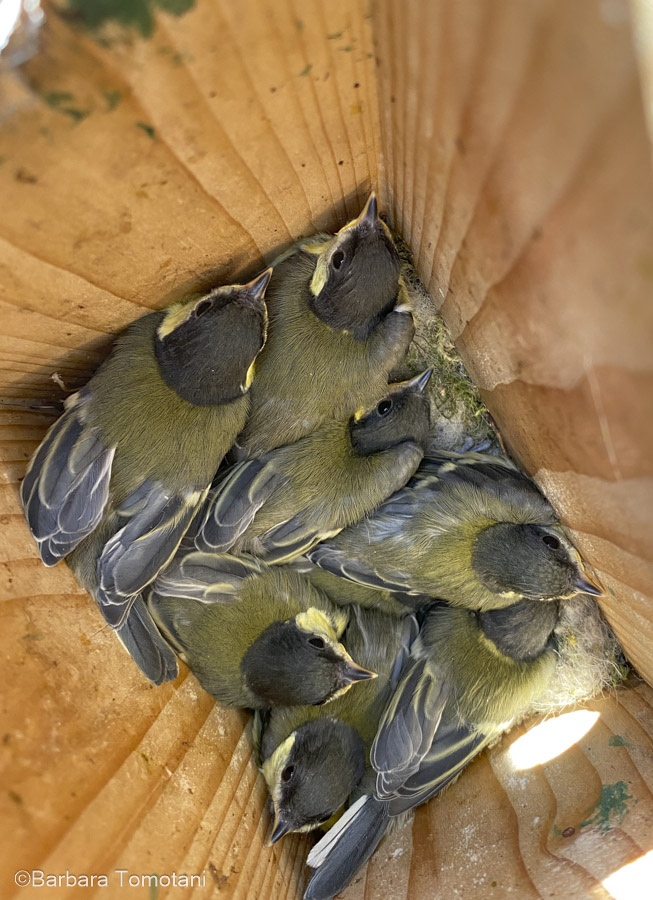
Filling up feeding stations
Our research partner and her team have set up 5 feeding stations on Tromsøya to study the birds’ activity throughout the year. Camera traps are set close to the feeders and take photos of visiting birds (some have been previously marked with a unique combination of color-coded rings). In winter especially, they need to be filled up frequently. This is what we started doing with volunteers in November and December.

What’s next ?
– In 2024, we will strengthen our collaborations with our UiT research partner and with the leaders of the Troms owl program.
– We will keep building and putting up owl and songbird nestboxes.
– We will keep promoting a more regenerative form of tourism by engaging travelers in actions that produce positive impacts on nature and host communities. We have started new partnerships with tour operators to reach out to and engage more travelers.
– We will keep raising awareness and cultivating a sense of caring in participants. More specifically, we want to involve more locals with a focus on youth. We want to give young people the opportunity to participate in science- and nature conservation-related actions.
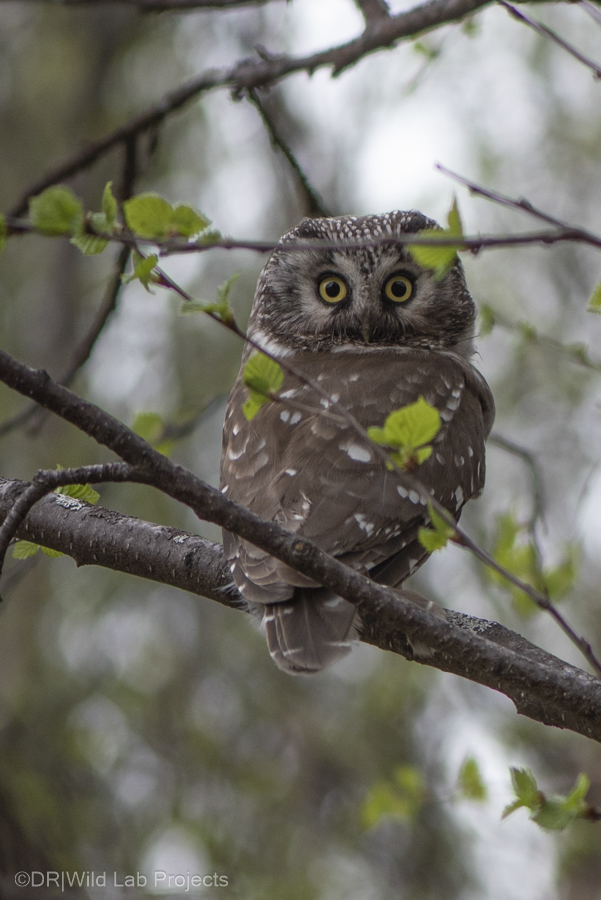
Read the full report:
